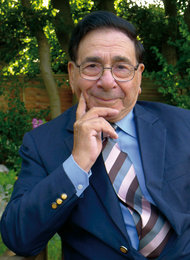(p. C4) Might some forms of neurological illness, such as multiple sclerosis and schizophrenia, be caused at least partly by bacteria, viruses or other parasites? A largely Danish team has recently published evidence of a strong association between multiple sclerosis and a retrovirus, together with hints that a gene called TRIM5, which is used by cells to fight viruses, is especially active in people with MS.
. . .
The virus implicated in multiple sclerosis is called HERV-Fc1, a bizarre beast called an “endogenous” retrovirus. What this means is that its genes are part of the human genome. For millions of years, they have been integrated into our own DNA and passed on by normal heredity. It was one of the shocks of genomic science to find that the human genome contains more retroviral than “human” genes: some 5% to 8% of the entire genome.
Normally, the genes of endogenous retroviruses remain dormant, but–a bit like a computer virus that springs into action on a trigger–something wakes them up sometimes, and actual viruses are made from them, which then infect other cells in the body. The Danish scientists suggest that this is what happens in multiple sclerosis. Bjørn Nexø of Aarhus University writes that “retroviral infections often develop into running battles between the immune system and virus, with the virus mutating repeatedly to avoid the immune system, and the immune system repeatedly catching up. One can see the episodic nature of multiple sclerosis as such a running battle.”
For the full commentary, see:
MATT RIDLEY. “MIND & MATTER; The Good News About the Virus in Your Genes.” The Wall Street Journal (Sat., March 10, 2012): C4.
(Note: ellipsis added.)
(Note: the online version of the commentary has the date March 9, 2012.)


